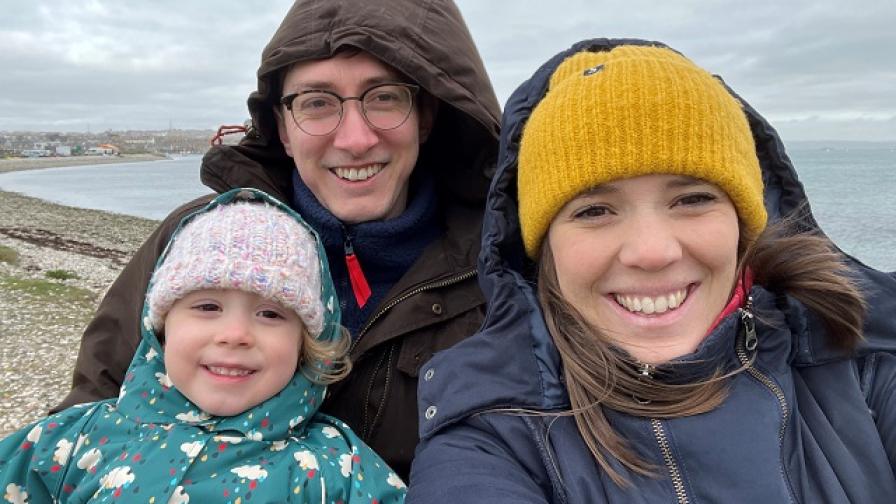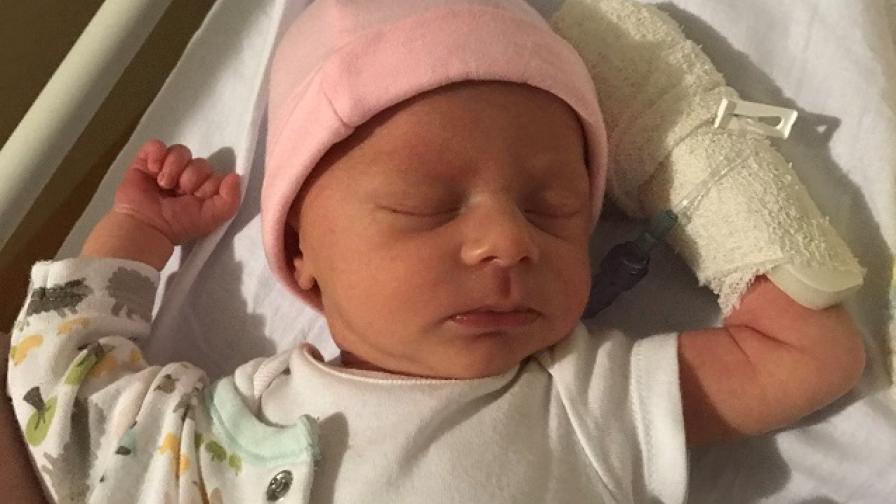breadcrumb navigation:
- Home /
- Research /
- Family stories /
-
current page
Eva: Rare liver disease
Eva: rare liver disease
Published on
Updated:
Eva's Story
Rare liver disease PFIC3
Eva is a very chatty little girl, who loves the outdoors and going to forest school. “She’s a real bright spark,” says her mum, Sophie. “She goes to nursery and is a happy little thing.”
After a very tough start in life, Eva has had a period of better health, something her parents are incredibly grateful for. But unfortunately, the family has no certainty as to how long it will last. “It feels a bit like a ticking time bomb,” says Sophie. “At the moment, we are enjoying time whilst she is well enough to live relatively normally.”
We know there will come a time when her health degrades significantly again”

Eva was diagnosed with progressive familial intrahepatic cholestasis type three when she was nine months old. This is caused by faults in a gene called ABCB4, which provides the instructions to make a protein needed for healthy liver function.
In children with PFIC3 the bile, a digestive fluid produced by the liver, lacks an essential component that protects the cells lining the bile ducts (the tubes along which the bile flows from the liver) from its corrosive properties. This means that the bile causes damage and scarring – and eventually the damaged cells stop working, causing liver failure.

As a baby Eva was extremely thin, struggled to feed or sleep and had very elevated liver enzymes. She’d been re-admitted to hospital, following a seizure, when she was 10 days old and spent most of the first months of her life there.
“She was classed as failing to thrive,” explains Sophie. “She had constant sickness and diarrhoea, and was very, very thin and very distressed. She wasn’t really growing and was still in tiny or premature baby clothes for a long time. We were very worried.”
Because the disease is so rare, it was really difficult to get a diagnosis and to understand why she was so poorly”
In the end it was Sophie, a biologist by background, who’d asked for Eva to be tested for PFIC. “I did loads of online research and have been told that we probably wouldn’t have had a diagnosis when we did if I hadn’t been pushing for it,” she says.
Since being diagnosed, Eva has been taking a liver medication and for the last two years has been generally well. But she already has scarring to her liver and recently her liver enzyme levels have begun to rise again.
Eva is also developing nutrient deficiencies such as anaemia. “We’re very concerned about the long-term impact of these,” says Sophie. “Although this is a liver disease, it can affect the whole body, including the brain, eyesight and growth.”

The longer Eva remains well, the better in terms of her development and growth. But also, the more time there is for research and for new treatments to become available”
“There are so few non-invasive treatment options – really, it’s just the medication she’s on now or a liver transplant. There isn’t an intermediate option,” says Sophie. “The drug she takes currently is not a cure. It just slows things down and buys us time, which is the best we can hope for at the moment.”
Action Medical Research is funding work to develop gene therapy for PFIC3. Led by Professor Paul Gissen at the UCL Great Ormond Street Institute of Child Health, this research could lead to a safer and better treatment option, transforming lives and sparing children from the long waits and the risk of complications associated with liver transplants.
For Sophie, research is hugely important. “This disease continues to have a wide-ranging impact on us as a family. It feels a bit like a family curse,” she says.
